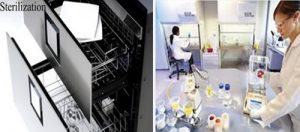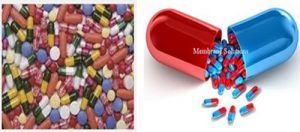

API (Active Pharmaceutical Ingredients) is the substance in a pharmaceutical drug or a pesticide some medications and pesticide products may contain more than one active ingredient. The manufacture of products based on small-molecule API remains critical to global healthcare. The manufacturing landscape is also full of challenges and opportunities.
API filters
The technology for production of Active Pharmaceutical Ingredients (APIs) is improving with the aim of developing new products and bio-products, to reduce the process costs and improve the quality of final products.

The manufacture of biopharmaceuticals requires multiple operations in order to deliver a product of appropriate quality and potency to the patient. Operations such as fermentations and chromatography are technically complex requiring considerable understanding and control.
Throughout the process it is necessary to ensure either sterility or the control of disburden within process streams. Conditions that are commonly encountered within bioprocesses are conductive to the growth of microorganisms within process solutions. These solutions are often moderate with respect to temperature, pressure, acidity and osmolarity and in addition can contain carbon sources required for microbial growth.
Sterilization filtration
Preventing contaminations within manufacturing process requires consideration to be given to many facets of facility design and operation. The operating philosophy of the facility can change the approach to contamination control. For example, a facility which is being operated “24/7” and in which equipment is adequately sized to maximize throughput can rapidly product being harvested from the bioreactor and minimize the risk of microbial contamination by reducing to a minimum the time product is being held in intermediate pool tanks. In cases where facilities are not being used so intensively a manufacturer might utilize sterile filtration in order to protect intermediate product pools from bioburden.

Clarification & Prefiltration
Clarifying filters and prefilters are recommended for removing contaminants that would affect downstream product quality, or otherwise plug a membrane filter and reduce its effectiveness and service life. The economic advantage of extending a membrane filter’s life is far greater than the cost of prefilters. Clarifying filters and prefilters are suited for applications where 100% retention of contaminants above a specified pore size is not required. A non-fiber releasing, membrane-like prefilter is recommended when using a clarifying or prefilter as a final filter. Fiber matrix clarifying filters and prefilters may occasionally unload retained contaminants into the filtrate if subjected to shock, such as that caused by a rapidly actuated valve.
Clarification & Prefiltration Filtration
Selection of a clarifying filter or prefilter is based upon the retention efficiency required for the filtration process at hand. Choosing the proper nominal pore size for a clarifying filter and/or prefilter will ensure the required dirt-holding capacity in your system. It will also extend the life of the final filter, and provide an economic advantage. In some cases, it is practical to use a moderately efficient clarifying filter followed by a more retentive prefilter. This will allow each filter in the train to be more fully expended, while removing as much incident contamination as possible.

Venting and Gas
In venting and air filtration applications, air flow is a critical performance parameter. Air and gas service are optimized for use in pre-filtration of compressed or pressurized gases, and sterile air or gas filtration to completely remove particles and droplets plus microorganisms like molds, yeasts or bacteria and even viruses and phages. These filters also find wide use in negative-pressure applications such as sterile filtration of vacuum break lines on lyophilizers and autoclaves, and sterile and non-sterile venting of tanks and containers
Venting and Gas filtration
A fluid filter is disclosed which separates gas from liquid and vents the separated gas from the filter. The filter includes a vented housing through which the fluid stream passes. Liquid-wetting filter means carried in the housing in the path of the fluid stream permits the passage of liquid-repellent filter to permit the passage of gas only. An automatic pressure sensitive control means may be used to seal the vent opening means against the entry of ambient air but to automatically release separated gas from the filter. The liquid-repellent filter may be secured to the housing by a mechanical bond between the housing and a fibrous backing carried by the filter, or a continuous band of medical grade tape may be used to attach the filter to the housing..
Venting and Gas filtration process